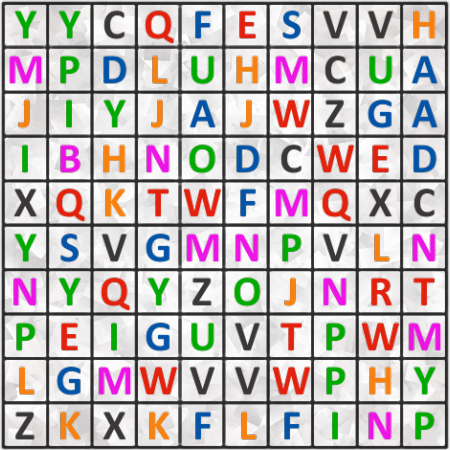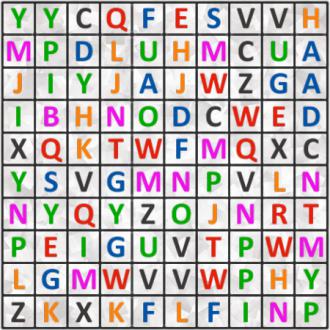Find a famous person
Find the first and the last name of a famous person. Text may go in all 8 directions. Length of words in solution: 3,5.
50/50
A young man watched as an elderly couple sat down to lunch at McDonald's. He noticed that they had ordered just one meal, and an extra drink cup. As he watched, the old gentleman carefully divided the hamburger in half, then counted out the fries, one for him, one for her, etc, until each had exactly half.
Then the old man poured half of the soft drink into the extra cup and set that in front of his wife. The old man then began to eat, but his wife just sat watching him.
The young man felt sorry for them and asked "I'm sorry to intrude, but would you allow me to purchase another meal for your wife so that you don't have to split your food?"
The old gentleman said, "Oh, no, thank you. But you see, we've been married a long time, and everything has always been shared, 50/50."
The young man said, "Wow! That's commendable." He then turned to the wife and asked, "Aren't you going to eat your share?"
The wife replied "Not yet. It's his turn to use the teeth."

